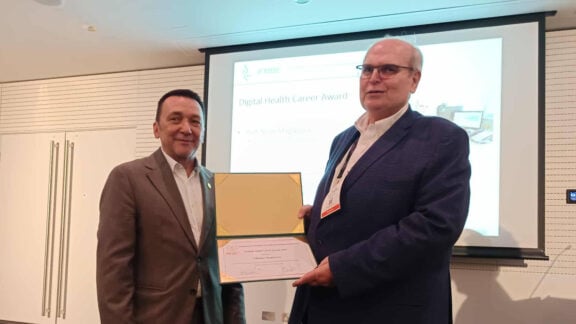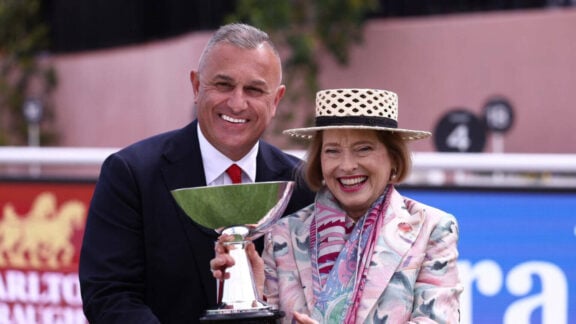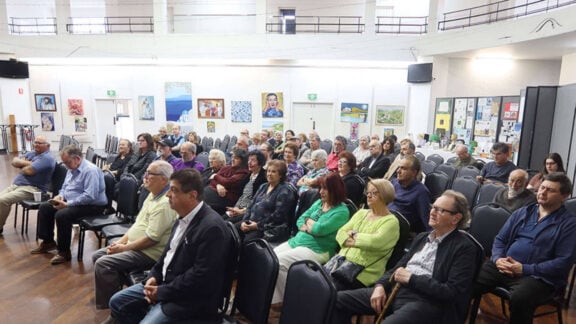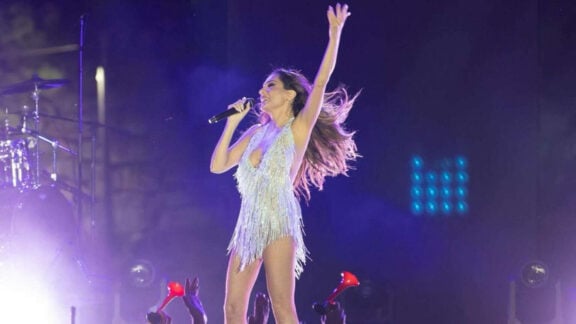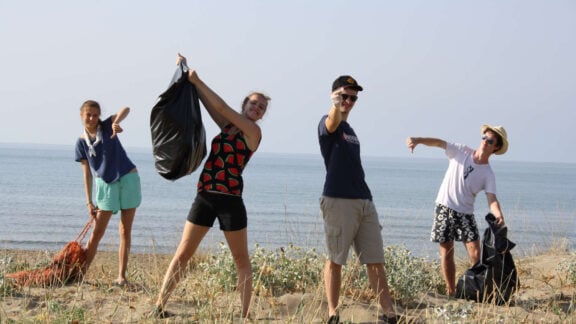Many Greek Australians might knock on wood or recoil at the mere mention of dying, but the topic of death concerns us all.
Beyond death’s emotional, personal, familial, and social dimensions, there are also economic aspects. The cost of dying is continuously increasing.
It’s no surprise that some joke about how, with today’s high prices, even dying has become unaffordable.
Planning early for peace of mind
Some have already made their arrangements, pre-paying for their graves, funerals, and other related expenses. They don’t want to burden their families even at the last moment and want their farewell to be as they choose. An essential factor is locking in current prices, given the cost of death will continue to rise.
“Particularly lucky are those who pre-paid for their funerals before the pandemic,” funeral home experts familiar with our community told Neos Kosmos, while all agreeing that the lack of available space in cemeteries is a significant problem and a major factor in the price increase.
Rising funeral costs vs saving on cremation
The average price for a burial plot in the Metropolitan Area of Victoria (Melbourne and suburbs) increased from $4,540 in 2019 to around $13,028 in 2023. In 2008, one could find space in a cemetery for less than $2,000, while the total cost of a funeral ultimately depends on the services requested from the funeral home and the coffin chosen, with some options exceeding even $50,000. More recently, there has been an increase in the number of people requesting cremation instead of burial, as it is a cheaper option.
Below are statistics based on the “The Cost of Death 2.0 Report” by Australian Seniors that dive deep into statistics across Australia with information on Greek Australians that has been collated by Neos Kosmos with the help of Agape Funerals, Tobin Brothers Funerals, Peter Tziotzis Orthodox Funeral Home, and Victoria Funerals.

Cost of death burdens Australians over 50
Australians over 50 are “re-evaluating their funeral preferences and seeking new ways to say their last goodbye. According to the report, rising costs—confirmed by the Greek community’s funeral homes—combined with trends, are shaping new perspectives on preparations for death.
The average funeral cost—whether burial or cremation is $9,076. That varies from state to state and between metropolitan and regional areas. This cost has increased by about 20 per cent across Australia since the previous related survey in 2019, and almost all respondents—about nine out of 10 of the 1,200 people over 50 who participated—expressed concern that funerals have become too expensive for various reasons.
Regarding burial, the preferred option by most Greek Australians, shortages in cemetery space “skyrocket” the cost.
Nationwide, the average cost for a burial in 2023 is $11,039, up from $9,055 in 2019, and for a cremation, it’s $8,045, up from $6,334 (according to the “The Cost of Death 2.0” report). The most expensive areas for burials across Australia were Canberra, the metropolitan New South Wales (Sydney and suburbs), and metropolitan Victoria (Melbourne and suburbs).
The average cost of a standard burial funeral is $20,310 in Canberra, $19,343 in Sydney, and nearly $19,000 in Melbourne (about $10,000 cheaper for regional Victoria). The final price can be lower or much higher, depending on the services requested from the funeral home, the type of coffin, the grave/monument, transportation possibly to Greece, and other factors.
As a result, additional challenges arise for a family mourning the loss of a loved one.
Sometimes, the financial burden has long-term effects, ranging from financial difficulties (reported by 33 per cent of respondents) to strained family relationships (36 per cent).
Indeed, those who reported disagreements with relatives and friends said these disputes were mainly concerned with the financial aspect of the funeral. Additionally, 27 per cent said that family members pressured them to spend more than initially planned (this percentage has more than doubled from 12 per cent in 2019).
Most respondents (74 per cent) believe that the deceased should cover the financial obligations of their funeral. At the same time, the idea that the spouse should pay was the second most prevalent opinion (36 per cent), with children paying coming in third place (16 per cent). This insight highlights why some Greek Australians take precautions (and some who can afford it even get “funeral insurance” offered, of course, for a fee, by certain companies).

“Do It Yourself” funerals: A rising trend
Cost-wise, although only 25 per cent of those surveyed nationwide are sure of the type of funeral they want, nearly three out of five (58 per cent) have adjusted their plans in response to rising prices.
They want something more straightforward (26 per cent), are exploring the option of cremation or budget-friendly alternatives (22 per cent), are pre-planning (15 per cent), and are taking personal initiative.
Some (9 per cent) even choose the DIY (Do it yourself) approach, bypassing professional services or making their coffins.
Only half (53 per cent) reported that their family members know their funeral preferences.
Inheritance: Planning for the inevitable
Regarding death in general, findings show that 78 per cent of those over 50 have drafted a plan for the distribution of their assets and belongings.
Most intend to pass their wealth to their children (81 per cent) and grandchildren (31 per cent). Others contribute to charities and foundations (10 per cent). Drafting a will (92 per cent) is the most common method of preparing for the inevitable, far surpassing the choice of simply discussing wishes with family members (38 per cent).
One in five (20 per cent) estimates that some close family members may be excluded from their wills.
This is primarily attributed to estrangement (58 per cent), the belief that they are undeserving (40 per cent), or recognising that other members need financial support more (27 per cent).
Another interesting point is the “digital legacy” one leaves behind, such as social media accounts. Nearly 7 out of 10 (68 per cent) over 50 haven’t given much thought to managing it after their death.
The primary efforts undertaken or planned by respondents include:
– Sharing wishes and instructions with loved ones on handling “digital assets” posthumously (62 per cent).
– Deciding what will happen with their online profiles (33 per cent).
– Creating backups of digital files for preservation (33 per cent).

Having the difficult conversations
The discussion surrounding death is challenging for many individuals. According to ‘The Cost of Death 2.0 Report,’ more than five out of six respondents (85 per cent) acknowledge the need for more open dialogue. This recognition stems from a desire to ensure the respect of end-of-life wishes and to assist older people in understanding the prospect of their mortality. However, a disparity exists between the aspirations of individuals over 50 and their actions toward preparing for aging.
Over half (53 per cent) express a desire to live until 80 years old (a relatively modest goal compared to many others, including some who easily reach or exceed 100 years old). Nearly one-third (36 per cent) rarely contemplate the age to which they wish to live. Notably, over half (54 per cent) have yet to make basic preparations for their funeral. However, most (67 per cent) acknowledge the need to begin preparations.
On average, respondents believe 64 is the appropriate age to begin discussing and communicating their end-of-life wishes to loved ones.
Technological advancements
Since 2019, the cost and manner of funerals have changed significantly due to the pandemic; while strict attendance restrictions have been lifted, technology occupies a central position. Sixty per cent of the report’s respondents attended a funeral with a live-streamed ceremony, 30 per cent witnessed a tribute to the deceased through video and photos, 23 per cent participated in an online memorial, and 14 per cent encountered digital condolence books.
At the same time, 12 per cent mentioned using “electronic tools” (digital, online) in planning a funeral. Livestreamed funerals have become more popular, eliminating geographical barriers, which is especially relevant for families with relatives in Greece and elsewhere. There appears to be a shift from traditional mourning, with more people preferring a celebration of life.
Notably, 83 per cent now prefer a celebratory approach, leading to a change even in the conventional funeral songs. Iconic artists like Elvis Presley, Queen, Frank Sinatra, and Elton John were identified as the most common choices for funeral music. More than half (56 per cent) reported attending a recent funeral that was more “relaxed” than “serious,” 70 per cent noted less sombre attire, and 64 per cent mentioned reduced religious elements.

The devil is in the details
The average cost of a funeral across Australia varies. In Victoria, the primary “package” for burial in the Metropolitan Area costs $18,652 ($4,390 for cremation) and $8,591 for regions ($4,421 for cremation). In New South Wales, the costs are $17,722 ($3,988) and $10,538 ($3,067), respectively. Queensland costs $12,991 ($3,497) and $8,853 ($3,728).
South Australia’s costs are $12,054 ($3,078) and $10,301 ($5,804), Western Australia’s are $11,621 ($4,821) and $7,501 ($5,795), Tasmania’s are $11,784 ($5,468) and $11,046 ($4,626), Northern Territory’s are $11,672 ($4,600) and Capital Region’s are $16,154 ($5,953). Indicatively, the typical “package” in Victoria is $19,250 ($6,639) and $10,980 ($7,493), while the “premium” reaches $20,910 ($9,103) and $13,664 ($10,681), with corresponding increases across the country.
The cost of a burial plot in Victoria is estimated at $13,028 (Metropolitan Area), up from $4,540 in 2019, and for the Region, prices are $3,993 (from $3,695). In New South Wales, prices were $12,766 (slightly reduced compared to 2019 for the metro area) and $5,788 (from $4,841) for the Region.
In Queensland, prices are $7,230 from $4,465 and $5,024 from $4,404, in South Australia, $7,738 from $4,078 and $3,983 from $2,526, in Western Australia $4,280 from $1,440 and $1,440 from $2,066, in Tasmania $3,795 from $2,806 and $5,946 from $6,750, in Northern Territory $5,172 from $3,869 and in Capital Region $10,046 from $8,159.
The cremation fee in Victoria was $995 for the Metropolitan Area in 2019 and $933 in 2023, while for the Region, it decreased from $895 to $645. In New South Wales, it fell to $755 from $1,168 (for Sydney and suburbs) and $788 from $1,030 for the Region. Similarly, in Queensland, it amounts to $630 from $615 (in Brisbane and suburbs) and $694 from $803 in the Region.
In Western Australia, it is $1,220 from $1,129 and $1,221 from $1,117; in South Australia, $605 from $495 and $884 from $797; in Tasmania, $1,313 from $1,225 and $865 from $810, in the Capital Region $1,530 from $1,200 and in the Northern Territory $1,500 from $1,309. Regarding our community specifically, the choice most of our compatriots consider for their funeral is burial, as confirmed by the four funeral homes we contacted (Agape Funerals, Tobin Brothers Funerals, Peter Tziotzis Orthodox Funeral Home, and Victoria Funerals).

Ashes to Ashes: Cremation
According to Chris Stamelos of Victoria Funerals, while burial remains the traditional choice for most Greek Australians, approximately one in twenty individuals now opt for cremation. Stamelos noted a significant shift in attitudes over the past decade. Previously, only one or two individuals per year would choose cremation, but this number has increased to around one per month. This change, he explained, is mainly due to the rising cost of burial sites.
Rising burial site costs
The escalating prices of burial sites have been cited as the primary reason for the growing preference for cremation. Kourtessis from Tobin Brothers Funerals highlighted that cemetery costs are adjusted annually, contributing to the overall increase in burial expenses.
He further explained that the state government determines these annual increases through a department called Cemeteries and Crematoria, which has managed all cemeteries for the past 11 years. Despite the yearly fee hikes, the exact criteria for these increases still need to be determined.
Stamelos stressed that the rising cost of purchasing burial plots is directly linked to the diminishing availability of land plots. This scarcity has further increased prices, making burial less financially viable for many families.
Cost Comparison: Burial vs cremation
The cost disparity between burial and cremation is significant. Cremation fees start at approximately $1,000 and can increase depending on additional services, while a single grave plot, excluding other expenses, can cost upwards of $10,000.
Theodore Dimopoulos from Agape Funerals explained that burial costs vary based on several factors, including the purchase date of the grave, the presence of a memorial, cemetery location, and prepayment for excavation, among others. On average, a new grave purchase in central Melbourne with a monument and necessary foundations can cost around $10,000.
Kourtessis added that cemetery prices for graves range from $8,000 to $50,000, depending on the cemetery’s offerings and the family’s preferences. He noted that burial costs have increased significantly in recent years, with the average price rising from $2,500 to approximately $11,000, representing a 450 per cent increase.
Peter Tziotzis from Peter Tziotzis Orthodox Funeral Home stated that burial costs typically range from $6,000 to $17,000, depending on various factors.
Breakdown of funeral expenses
Aside from the purchase of the grave, “basic” funeral expenses range from $5,000 to $20,000. Additional costs, such as those for the ceremony, burial site, tombstone removal/replacement, death certificate, church, flowers, and coffin (from $800 to $2,000), can significantly impact the overall cost.
Kourtessis estimated that the total cost for a typical Orthodox funeral, including all necessary procedures, is around $6,200. Families can choose from various funeral packages, with costs ranging from $11,000 to $13,000 for a basic funeral and increasing for higher-tier options.
Dimopoulos explained that funeral expenses are categorised into funeral, cemetery, and church expenses. The basic package for a funeral costs $5,500, while the standard package costs $7,040.
Special cases
What happens in those cases where a family cannot afford the expenses of a funeral/cremation or the deceased has no relatives/money to cover these costs?
Kourtessis informed Neos Kosmos that there is an option to choose payment plans through which “the deceased’s family members can manage the funeral expenses over a suitable period.”
However, he added that “in cases where families are in absolute need without any support,” possible solutions are considered “to minimise service expenses and other related costs,” offering “a negotiated cost that families can manage.”
According to Dimopoulos, when “there is no relative, friend, organisation, or person who can take responsibility,” then “the Victorian government covers the expenses for the simplest and most economical/funeral cremation.”
He further explained that in cases “where there is a family but they are unable to afford the expenses, then the State Trustees (a company owned by the Victorian Government that provides services related to estates) takes on the expenses provided that all the deceased’s assets are under their responsibility.”
Stamelos talked also of a “Pauper’s funeral” arises, “where the state offers a kind of social service, covering the expenses for the burial and funeral of the deceased.”
He added that the state offers approximately $3,000 to the funeral director for the funeral expenses. At the same time, ” some cemeteries have sections of land designated for ‘Pauper’s funerals,’ and it is possible to purchase a grave that costs less than $1,000.”
According to Stamelos, regarding cases “of individuals who have money but have no one,” then “the state gets involved, and the State Trustees (a government-owned company in Victoria that manages the financial affairs of the individuals they represent, acting in their interest), depending on who holds the State Trustees contract, takes responsibility for the procedural requirements of the individual’s funeral.”

Additional information, provided by Dimopoulos from Agape Funerals
- Burial space availability: Most cemeteries have space for up to three individuals, not just two (as most people believe). Additionally, although many cemeteries had previously announced that they were full, they now appear to have graves available. The available space in cemeteries for burial has been significantly restricted, resulting in cemeteries exploring new methods to address the issue of limited space.
Therefore, if they find that there are no remains in a specific grave and no one is interested in using it, using particular control techniques to confirm if a burial has taken place in a space purchased by a family, cemeteries retain the right to offer the grave for sale again, provided they have not been able to contact the family to which the grave belongs.
Older closed cemeteries find ways to utilise more space, for example, by limiting access to a corridor and providing access from another area to dispose of additional space.
Apart from the practical issue of space availability, the lack of space in urban cemeteries has also had economic implications, as it has led to an increase in burial space prices.
- Regarding financial support from the federal government: In this case, we contacted Centrelink, which provides financial support to the deceased’s partner or carer. Although Centrelink does not offer financial assistance for funeral expenses, a lump sum bereavement payment may sometimes be made to the beneficiaries’ bank account. This amount is equivalent to 14 weeks of Centrelink payments, meaning the money they would usually receive from Centrelink for 14 weeks, the deceased and their partner/carer can use the money for the funeral expenses.
- Burial options: There are various options regarding how people wish to honour their loved ones. One can choose a monumental grave (which is like a small marble bed). There is also the option of a burial plaque (the plaque covering a grave). Finally, there is the option of a plaque in the frame of the monumental grave, usually containing information about the person buried in the specific grave. It is important to note that as most Greek families choose monumental graves, the existence of a pre-existing foundation structure for constructing a monument in a grave is an advantage for the stability of the monuments. If no foundations are in a grave and the family desires a monumental grave, they are burdened with additional expenses ($2,500 to $3,000) for the foundations. The process of digging the soil may cause instability due to the increased weight of the monumental construction and, as a result, cause the monument to lean in one direction.



